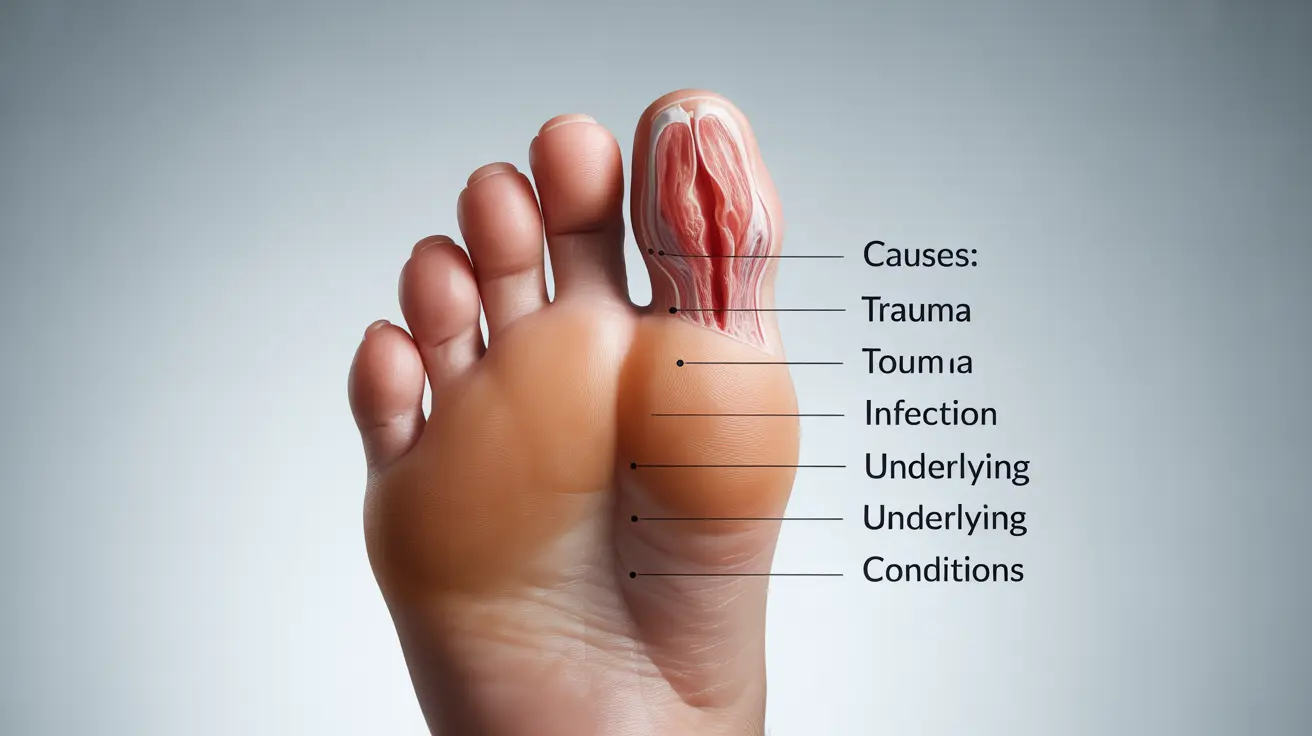A swollen toe can be more than just a minor inconvenience—it can significantly impact your mobility and daily activities. Whether caused by injury, infection, or underlying health conditions, understanding the reason behind toe swelling is crucial for proper treatment and prevention of complications.
In this comprehensive guide, we'll explore the various causes of toe swelling, effective treatment options, and important signs that indicate when medical attention is necessary.
Common Causes of Toe Swelling
Toe swelling can occur for numerous reasons, ranging from acute injuries to chronic medical conditions. Understanding these causes is the first step in proper treatment:
Trauma and Injuries
Physical injuries are among the most common causes of toe swelling, including:
- Stubbing the toe
- Sports injuries
- Dropping heavy objects on the foot
- Repetitive impact from activities like running
Infections
Various types of infections can lead to toe swelling:
- Ingrown toenails
- Bacterial infections
- Fungal infections
- Cellulitis
Medical Conditions
Several underlying health conditions may cause toe swelling:
- Gout
- Osteoarthritis
- Rheumatoid arthritis
- Diabetes-related complications
- Poor circulation
Treatment Options for a Swollen Toe
Immediate Care
When you first notice toe swelling, consider these initial steps:
- Rest the affected foot
- Apply ice for 15-20 minutes at a time
- Elevate the foot above heart level
- Use compression socks or bandages if appropriate
Medical Treatments
Depending on the underlying cause, medical treatments may include:
- Antibiotics for bacterial infections
- Anti-inflammatory medications
- Specialized medications for gout
- Physical therapy
- Proper footwear modifications
Warning Signs and When to See a Doctor
Seek immediate medical attention if you experience:
- Severe pain that doesn't improve with rest
- Inability to bear weight on the affected foot
- Signs of infection (redness, warmth, pus)
- Fever accompanying toe swelling
- Color changes in the toe
- Numbness or tingling
Prevention and Self-Care
To prevent toe swelling and maintain foot health:
- Wear properly fitting shoes
- Keep feet clean and dry
- Trim toenails correctly
- Maintain a healthy weight
- Exercise regularly with appropriate footwear
- Stay hydrated
Frequently Asked Questions
What are the common causes of a swollen toe and how can I identify them?
Common causes include trauma (like stubbing or dropping something on the toe), infections, gout, arthritis, and poor circulation. You can identify the cause by noting when the swelling began, associated symptoms like pain or redness, and whether the swelling is localized or affects multiple toes.
How should I treat a swollen toe caused by an injury or infection?
For injuries, follow the RICE method: Rest, Ice, Compression, and Elevation. For infections, keep the area clean, apply antibiotic ointment if recommended, and seek medical attention if symptoms worsen or don't improve within a few days.
When is it necessary to see a doctor for a swollen toe?
See a doctor if you experience severe pain, signs of infection (redness, warmth, pus), fever, inability to move the toe, or if swelling persists for more than a few days despite home treatment.
Can arthritis or gout cause a swollen toe and what are the treatment options?
Yes, both conditions commonly affect toes. Gout typically causes sudden, severe pain and swelling, while arthritis may develop gradually. Treatment options include medications, dietary changes, and lifestyle modifications specific to each condition.
What home remedies help reduce swelling and pain in a swollen toe?
Effective home remedies include ice therapy, elevation, over-the-counter pain relievers, Epsom salt soaks, and wearing comfortable, supportive shoes. Rest and avoiding activities that aggravate the condition are also important.




